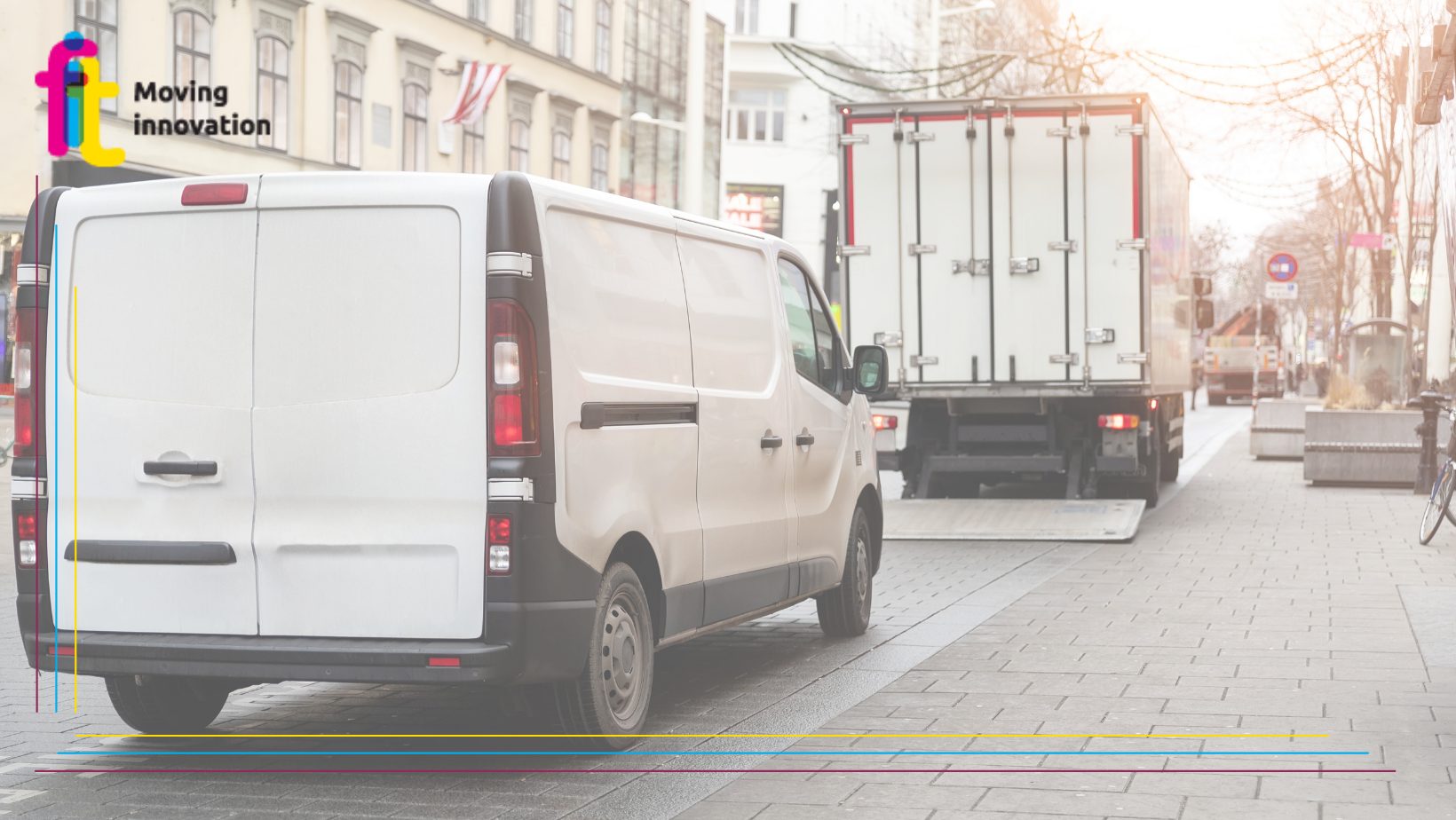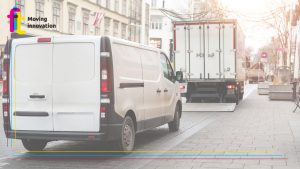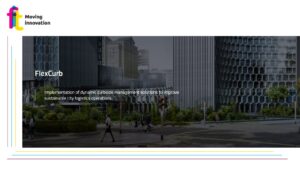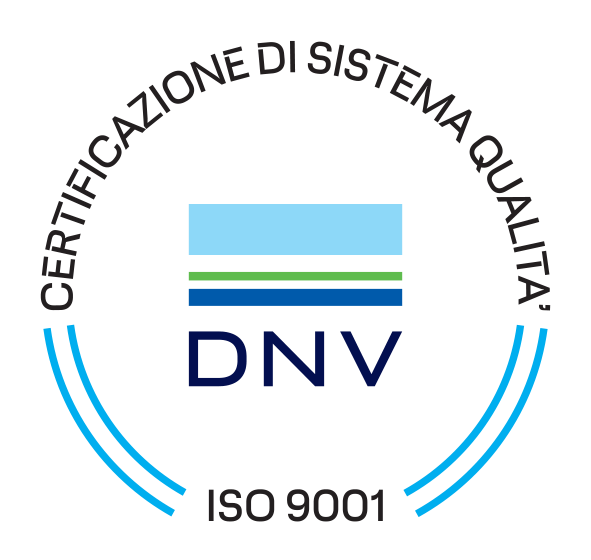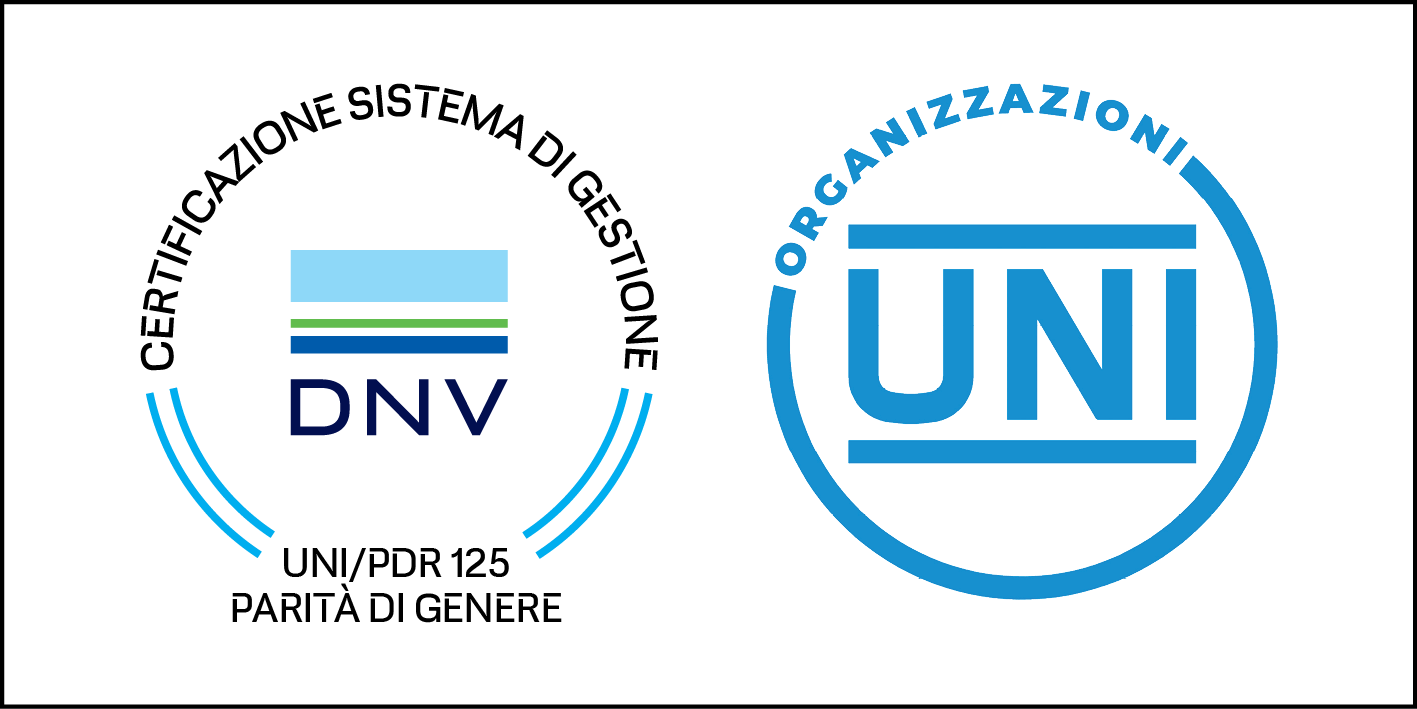The impact of SULP in optimising urban logistics: the contribution of FIT
The impact of freight transport on urban areas and the role of SULP in optimising urban logistics
In recent years, the growth of freight transport activities in urban areas has had significant environmental, economic and social impacts. These include increased air and noise pollution, traffic congestion and the reduction of space for sustainable mobility and urban living.
In particular, according to a recent study by the World Economic Forum, the rapid growth of e-commerce has profoundly transformed consumer expectations, leading to a sharp increase in deliveries. Globally, e-commerce already accounts for more than 20% of retail sales and is contributing to an increase in the number of delivery vehicles on urban roads. In this context, the number of delivery vehicles could increase by 61% by 2030 in all cities. Globally, delivery-related carbon emissions are expected to grow by an estimated 60% by 2030, accounting for about 54% of transport sector emissions and 13% of total city emissions. This increase would have negative effects on public health, lead to a 12% increase in healthcare costs and result in a 14% increase in road congestion. As a result, drivers could face an additional delay of five minutes per trip, while delivery vehicles could lose up to 34 additional minutes per day due to congestion. Annually, this would result in a loss of productivity of up to 30 hours per passenger vehicle and over 200 hours per delivery vehicle.
In this context, SULP (Sustainable Logistics Urban Plans) represent a key tool for optimising urban logistics, promoting solutions that combine efficiency, sustainability and innovation. FIT Consulting has distinguished itself in this area, supporting several Italian cities in the development of plans dedicated to sustainable logistics.
Regulatory framework and current challenges
Urban logistics has therefore gained increasing attention, also at the regulatory level. In 2011, Europe had already set the goal of zero-emission city logistics by 2030 with the transport white paper. The latest Urban Mobility Framework highlights the need to integrate urban logistics measures into SUMP (Sustainable Urban Mobility Plans), which today often focus almost exclusively on passenger transport.
The Italian regulatory framework, with Decree 397 and the subsequent update Decree 396, has implemented the European guidelines, paying particular attention to freight transport in cities. The PUMS regulations influence urban logistics through:
- Standards that apply to logistics companies in terms of technical requirements and conditions to be met, as stipulated by Italian and EU law, which include:
- a) technical regulations established at EU level to define a common road transport policy that preserves fair conditions of competition and guarantees the freedom to provide services;
- b) a set of legal conditions including DURC (payment of insurance and social security contributions), contractual obligations, audits, restrictions, etc.
- Air quality improvement plans and programmes are compulsory for the Regions and Autonomous Provinces that register for one or more of the regulated pollutants (sulphur dioxide, nitrogen dioxide, benzene, carbon monoxide, lead, PM10 and PM2.5 particulate matter) that exceed the regulated limit or target values. In Italy, the Regions and Autonomous Provinces are the bodies responsible for assessing and managing air quality and are therefore also in charge of establishing the regulations aimed at reducing harmful effects on human health and the environment as a whole.
- Local, temporary, mobility regulation ordinances, etc. that may be issued by municipalities as measures to regulate, discipline, limit or impose restrictions or constraints on traffic and/or operations. Ordinances often form part of broader Traffic Plans, Noise Pollution Plans, etc., whose objectives are to reduce the impacts of traffic on citizens’ health and quality of life. Together with municipal ordinances, a further level of verification and limitation of the operation of vehicles (logistic and otherwise) are the Ministerial and Motor Vehicle Licensing (Motorizzazione civile) inspections aimed at checking the pollutant class of circulating vehicles, compliance with exhaust emission limits, the correct execution of overhaul checks and the presence of a valid insurance certificate (this detail is not always checked by municipalities when issuing ZTL access permits).
From a more operational point of view and with a greater focus on logistics, the Ministry of Transport, together with ANCI (Association of Italian Municipalities) and the Freight Leaders Council, published a position paper in December 2020 that identifies a series of immediately feasible actions to pursue more efficient and sustainable logistics, emphasising the need for an integrated approach to urban planning that takes into account the mobility of both people and goods.
Despite this growing focus on logistics and the need to proceed with integrated planning between passengers and freight, the ANCI survey conducted in February 2024 reports that more than 70% reserve barely a paragraph or even an annex to the SUMP for urban logistics, defining only generic actions; 28% go into greater detail, but these are still separate sector plans.
The objectives of the SULP
The measures defined in the SULP can actually be traced back to the following macro-areas:
- Management involves defining an efficient governance model through permanent working groups where stakeholders propose effective, sustainable and transferable solutions.
- Behavioural/cultural, through the definition of ‘reward measures’ – not only restrictions and bans – that incentivise local stakeholders to adopt virtuous behaviour (such as incentive schemes to purchase low environmental impact vehicles, extended LTZ access windows, etc.).
- Regulatory, by means of regulations and permits for access, transit and parking in LTZs, pedestrian areas, LEZs, etc., out-of-hours delivery systems, reverse logistics, etc.
- Infrastructural, with the rationalisation of the areas from which to start distribution services in the territory, rationalisation in the use of loading and unloading areas with the possible support of digital tools and new technologies for control and sanctioning, creation of ad hoc infrastructures for consolidation and distribution (consolidation centres, mini-hubs, lockers).
Critical issues and points to be addressed in developing a SULP
Although the rapid growth of e-commerce and direct-to-consumer deliveries have added considerable complexity to the urban logistics ecosystem, urban logistics actually encompasses all the services necessary for the functioning of the city; not only B2B distribution services of supplying shops, markets and outlets, and B2C direct-to-consumer delivery. Urban logistics also includes all those activities supporting production (e.g. renovations, removals), maintenance (lifts, installations) and craftsmanship carried out by any type of entity, public, private, third party and own account transport.
The complexity of urban logistics has often been poorly managed for several reasons:
- on the one hand, in public administrations the figure of the City Logistics Manager is often missing, i.e. a professional figure with specific skills and responsibilities for urban logistics and freight transport, characterised by dynamics that are profoundly different from passenger transport;
- on the other hand, there is the issue of the unavailability of data to effectively and efficiently understand, monitor and manage freight flows and commercial and industrial vehicles, while continuing to ensure the necessary service levels. As previously mentioned, the urban logistics market is characterised by considerable complexity, with players differing in terms of their role along the supply chain, their commodity category, their size and degree of innovation (to mention just a few aspects). The more structured operators, who manage large volumes, are characterised by a high degree of digitisation and data collection and analysis; therefore many useful data to describe urban logistics are there, but they are not harmonised, are fragmented and are not shared. As better explained later on, talking about the European DISCO project coordinated by FIT, there are already successful cases where Data Spaces encourage stakeholder participation through prioritised and anonymised data sharing, through access to a catalogue of federated services, based on principles of data sovereignty, interoperability and trust.
Another fundamental aspect is the involvement of the main stakeholders, an important condition for the realisation of the different measures envisaged by a SULP to be developed through the Logistics Living Lab, i.e. a permanent working group involving the main territorial stakeholders in the process of co-definition and implementation of urban logistics measures, as the active participation of the stakeholders is fundamental in identifying potential criticalities, strengths, weaknesses, threats and opportunities with respect to the measures to be implemented and developed.
Active involvement allows the actors to perceive the Plan as a shared project, of which they are an integral part, rather than as an external imposition. In this scenario, it is essential to define and sign a multi-year programme agreement or memorandum of understanding within the Logistics Living Lab identifying timeframes and responsibilities for implementing the measures developed and shared at the round table.
The role of FIT Consulting
FIT Consulting has contributed to the development of several SULP in Italy. Below some of our most significant experiences.
Syracuse, Ostuni and Rimini: the needs of areas with a strong tourist vocation
FIT dealt with the drafting of the PULS of Syracuse, Ostuni and Rimini, all cities with a strong tourist vocation where it was therefore necessary to strike a balance between the protection of historical heritage and logistical needs.
In Syracuse, the Sustainable Urban Logistics Plan has developed measures to move from diffuse and non-optimised logistics to systemic and cooperative logistics in the urban area, with a specific focus on the restricted traffic zone with a strong historical and tourist value represented by Ortigia.
In Ostuni, the Sustainable Urban Logistics Plan defines intervention measures (micro-hubs and cycle logistics) for the reorganisation of last-mile logistics in a town and historic centre with a strong vocation for tourism, balancing the protection of historic heritage with the accessibility of protected sites.
In Rimini, the Sustainable Urban Logistics Plan has focused on the seafront where, with a recent redevelopment, the Parco del Mare has been created and many areas have been pedestrianised. After estimating the supply and demand for parking and goods distribution needs, the planned measures consist of a mix of regulations encouraging low-emission vehicles and innovative models such as cycling. FIT is currently collaborating on an interesting experiment, financed by the Italian Recovery Plan, which envisages the installation of refrigerated goods transshipment equipment (lockers) enabling last-mile transport by cargo-bike for an important chain of Ho.Re.Ca. products.
Rome and Turin: the complexity of the Metropolitan Areas
In the metropolitan areas of Rome and Turin, the preparation of the Plan was considerably more complex given the size of the areas involved and the diversity of the socio-economic fabric. In these cases, the dialogue phase with stakeholders was relevant and the subdivision by product sectors essential to grasp the facets of the different needs.
In Rome, the Plan for Freight and Sustainable Logistics, approved last December 2024, started from the analysis of Floating Car Data (FCD) to identify and analyse the main freight vehicle nodes and corridors. These analyses were enriched by intensive consultation and concertation work with the main metropolitan stakeholders, who were involved from the state of the art analysis to the co-definition of the measures, making it possible to develop ad-hoc interventions tailored for specific requirements of different supply chains.
In Turin, beyond the regulatory measures and incentives schemes for the progressive replacement of the vehicle fleet, the various innovative measures include the idea of cargo-hitching, freight transport shared with public transport, applicable in rural areas where the density and supply of transport systems are limited. This solution is now being tested and FIT will support the metropolitan city of Turin with the design of a solution shared with cross-border areas in France.
Modena and Bergamo: combining historical heritage with industrial vocations
In Modena and Bergamo, City Logistics studies have made it possible to promote a better liveability of urban spaces and in particular of historical centres, often characterised by ancient and narrowed streets that are not compatible with the transit of bulky vehicles, also through the definition (or revision) of the rules of access, transit and parking of commercial and industrial vehicles and the identification of spaces/facilities for cross-docking.
The DISCO project, Data Spaces and the new SULP guidelines, towards the Physical Internet
Looking to the future, FIT is committed to developing innovative projects leveraging advanced technologies to support urban logistics planning.
Among the innovative projects FIT is working on is the European project DISCO, coordinated by FIT. With its 47 partners, DISCO aims to accelerate the upscaling towards a new generation of urban logistics and smart planning framework, enabling the transition to carbon-neutral and digital cities in Europe by providing innovative tools and methods, changing the logistics and urban planning paradigm with a Physical Internet (PI) driven approach. The DISCO project envisages the implementation of innovative solutions, demonstrated in the project’s 8 Living Labs, which focus on the dynamic use of the cities’ available resources on the basis of priorities, through data sharing, while with its two main technical outputs, the Meta Model Suite and the Data Space, it aims to speed up the transition process by making European cities digital and zero-emission.
URBANE project, Digital Twin and Artificial Intelligence to evaluate urban logistics policies
In the European project URBANE, 4 Lighthouse Living Labs (LLs) were supported in a transition towards efficient, resilient, safe and sustainable last-mile transport. Helsinki (FI), Bologna (IT), Valladolid (ES) and Thessaloniki (GR) have already tested efficient, replicable and socially acceptable innovative solutions for last-mile delivery. FIT, as project’s Innovation Manager, is coordinating the development of the Innovation Transferability Platform – comprising Digital Twin tools, Artificial Intelligence, open models of collaboration between urban logistics actors, Smart Contracts governed by blockchain technology and a data-based radar enabling impact assessment – and the Impact Assessment Radar, which will enable the adaptation and replication of the solutions tested in the first four cities in two Twin Living Labs, in Barcelona and Karlsruhe.
The development, approval and implementation of SULP represent a crucial element to address urban logistics challenges and foster more sustainable and livable cities. Thanks to FIT’s contribution, several Italian realities have already been able to implement innovative and integrated solutions, balancing the needs of efficiency, environmental protection and quality of life. Looking to the future, projects such as DISCO and URBANE demonstrate that technological innovation, stakeholder collaboration and the strategic use of data can accelerate the transition towards a zero-emission and digital urban logistics model, laying the foundations for resilient, sustainable and more livable smart cities.
For more information on FIT Consulting’s services, please consult the dedicated page on our website.
For more information on the contents of this article, please contact Marisa Meta, EU Project Supervisor and Project Manager FIT, meta@fitconsulting.it

